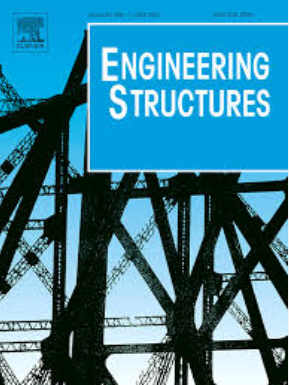Seismic response of geostructures to obliquely incident pulse-type near-fault P and SV waves
IF 5.6
1区 工程技术
Q1 ENGINEERING, CIVIL
引用次数: 0
Abstract
The assumption of vertical propagation for near-fault ground motions is often inadequate. Such ground motions produce pulse-like excitation with forward-directivity effects. This paper investigates the response of a geostructure (i.e., coupled dam-foundation-reservoir system) to near-fault pulse-like ground motions characterized by P and SV waves, including both symmetric and anti-symmetric pulses. Seismic wave propagation is simulated using a semi-analytical method in conjunction with the domain reduction method. The analysis encompasses equivalent pulses generated by modified Gabor wavelets and real near-fault ground motions with varied frequency content and pulse types. This paper further considers post-critical incident angles and inhomogeneous wave propagation. Over 800 transient simulations are conducted. To generalize the outcome, variability in pulse type, wave type, incident angle, number of pulse cycles, frequency content, pulse amplitude, and pulse period are assessed. Moreover, a series of sensitivity analyses are conducted to evaluate the elasticity ratio of super-structure to foundation, and structure-to-pulse period ratio. The results demonstrate a significant impact of most these parameters on the dynamic response of the system. The maximum response under SV waves is observed just beyond the critical angle, with results showing a 20%–60% increase over the vertical propagation case. For P waves, the normalized response with respect to the vertical propagation case may be up to 3.6 times at a 70-degree angle. The findings underscore the necessity of considering oblique pulse-type ground motions in seismic risk analysis of geostructures within near-fault zones.
求助全文
约1分钟内获得全文
求助全文
来源期刊

Engineering Structures
工程技术-工程:土木
CiteScore
10.20
自引率
14.50%
发文量
1385
审稿时长
67 days
期刊介绍:
Engineering Structures provides a forum for a broad blend of scientific and technical papers to reflect the evolving needs of the structural engineering and structural mechanics communities. Particularly welcome are contributions dealing with applications of structural engineering and mechanics principles in all areas of technology. The journal aspires to a broad and integrated coverage of the effects of dynamic loadings and of the modelling techniques whereby the structural response to these loadings may be computed.
The scope of Engineering Structures encompasses, but is not restricted to, the following areas: infrastructure engineering; earthquake engineering; structure-fluid-soil interaction; wind engineering; fire engineering; blast engineering; structural reliability/stability; life assessment/integrity; structural health monitoring; multi-hazard engineering; structural dynamics; optimization; expert systems; experimental modelling; performance-based design; multiscale analysis; value engineering.
Topics of interest include: tall buildings; innovative structures; environmentally responsive structures; bridges; stadiums; commercial and public buildings; transmission towers; television and telecommunication masts; foldable structures; cooling towers; plates and shells; suspension structures; protective structures; smart structures; nuclear reactors; dams; pressure vessels; pipelines; tunnels.
Engineering Structures also publishes review articles, short communications and discussions, book reviews, and a diary on international events related to any aspect of structural engineering.
 求助内容:
求助内容: 应助结果提醒方式:
应助结果提醒方式:


